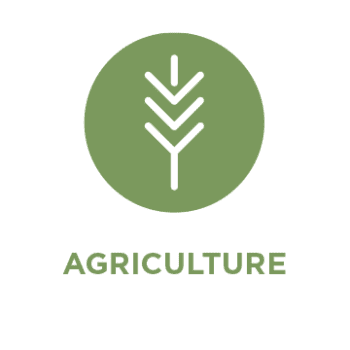Chris Loomis, California Department of Fish and Wildlife Specialist
Chris Loomis is a specialist with the California Department of Fish and Wildlife (CDFW) in Region 1 Coastal Fisheries who has combined his expertise in biology with a profound passion for conservation. Hear more from him and how he is a hero for Eel River salmon below!
Could you please tell us a bit about yourself and your role?
I’m a Specialist with CDFW in Region 1 Coastal Fisheries and former district fisheries biologist for southern Humboldt and Mendocino Counties. In my former role I helped run fisheries monitoring projects on the Eel River including a coho salmon population monitoring project on the South Fork Eel River, restoration effectiveness monitoring in the Ocean Ranch Unit of the Eel River estuary, and several fish community distribution surveys all over the Eel River. I also participated in recovery and restoration planning efforts all over the Eel River. In my current role I provide technical assistance to all of our Region 1 coastal fisheries monitoring projects including data management, analysis, study design, technical training, and I still occasionally sneak out into the field and collect data when I can.
What role do you play in the work to protect Eel River native fish and suppress pikeminnow?
When I started working in Fortuna and focusing on the Eel River, it was hard not to notice the massive tracts of land all over the Eel River delta that had been leveed, drained, and converted to agriculture production. To me this is a glaring scar in the ecological face of the Eel River and a hindrance to the recovery of its native species. The vast majority of freshwater-estuary ecotone of the Eel has been converted to a completely different ecology, one that does not include fish at all. We’ve only been able to recover a small portion of that landscape through acquisition and restoration but we’ve hardly made a dent in the changes that have occurred since the turn of the century.


There is also intact estuary and some restored areas in the Eel River estuary with little to no fisheries monitoring occurring, leaving a large gap in our understanding of how well the estuary ecosystem is currently functioning and how or when native fish like coho salmon use it. I’ve tried to make it a priority in my work to expand our monitoring efforts to include the estuary and promote work to restore and re-connect former estuary lands in the Eel. Collecting this baseline data is essential to restoration and recovery planning and a role that I think our Department can play well in the community effort to restore our riverscapes.
Similarly, I saw a deficit in our data collection of juvenile salmonids in the Eel River for all species and at most phases of their life history. Observing how large and potentially problematic the Sacramento Pikeminnow population is, I sought out an opportunity to test the survival rate for out-migrating coho salmon and steelhead smolts; a metric that we’ve never had for any part of the Eel River. Through some re-allocations of equipment from other branches of CDFW, a lot of training and advice from colleagues all over the state, and local collaborations with CalTrout and UC Berkeley we’ve been able to pull off three years of this study and are using that information to motivate new focusses for restoration, many of which focus on controlling the pikeminnow population.


Why is the estuary important for salmon and steelhead?
The estuary is a unique and incredibly diverse portion of the riverscape; there is only one estuary for the entire Eel River watershed and every anadromous fish in the system has to pass through it at least twice to complete its life history. However, from what we know about the estuary, its not simply a pass-through entity, it’s invaluable salmon habitat for physiological transitions and a source of massive growth potential. Whether they arrive in early winter or later in the spring as smolts, juvenile salmon take the opportunity to pause their swift downstream migration through the Eel River and explore the vast, food-rich, brackish water channels of the estuary and gorge on an all-you-can-eat buffet while going through their physiological transitions that prepare them for the ocean environment. When they return as adults in the fall, salmon and steelhead typically pause in the estuary again to transition back to a freshwater environment and prepare for their spawning migration back to their natal streams of the South Fork Eel River or elsewhere in the Eel. Thus, the estuary, like the tributaries, is an essential component of an anadromous fish's life cycle.
How did you end up in this field? What was your journey like to where you are today?
My father was an avid fisherman, spending over a decade commercial salmon fishing in Alaska before I was born, and both of my parents love our natural world and actively seek to connect with it in many ways. They shared these passions with me as I grew up exploring the coastal bluffs and intertidal zones of the California coast. In high school I discovered my aptitude for biological sciences and decided that that would be my focus as an undergraduate. After discovering that I could make a career out of being a field biologist and enjoy stimulating scientific endeavors and natural history, all while working in beautiful outdoor settings I think my path was set. Salmon fishing in particular is one of my all-time favorite pastimes so it seemed inevitable that the gravitational pull of salmon would bring me into a salmon-focused career.


What is your favorite part about the work you do?
My favorite part about the work I do is all the special places I get to go. Salmon seem to have a preference for some of the most beautiful places in this world and its so fun exploring all the seldom visited salmon and steelhead haunts on the north coast.

















 Dams block access to historical spawning and rearing habitats. Downstream, dams alter the timing, frequency, duration, magnitude, and rate of change of flows decreasing habitat quality and survival.
Dams block access to historical spawning and rearing habitats. Downstream, dams alter the timing, frequency, duration, magnitude, and rate of change of flows decreasing habitat quality and survival.